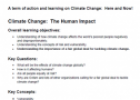Cargando...
Recursos educativos
-
Nivel educativo
-
Competencias
-
Tipología
-
Idioma
-
Tipo de medio
-
Tipo de actividad
-
Destinatarios
-
Tipo de audiencia
-
Creador
-

Initial evaluation 01 - Human reproduction
EduBook Organización
- 2340 visitas
Mark each sentence as true or false: The sex cell of men is called an ovum. ➝ Testicles produce sperm. ➝ Fertilisation is the formation of an ovum or a sperm. ➝ Women are female. ➝
-

Lesson plan: Human dimensions project
Tiching explorer Organización
- 1 lo usan
- 2379 visitas
Lesson plan focused on the measurement of human dimensions. It contains instructions and links related to the topic.
-

Final evaluation 01 - Human reproduction
EduBook Organización
- 2255 visitas
Describe the process of fertilisation and the development of the zygote, from the beginning until the formation of the fetus.
-

Initial evaluation 15.01 - Human Societies
EduBook Organización
- 2122 visitas
What do you understand by the terms social and cultural diversity?
-

Final evaluation 06 - Human reproduction
EduBook Organización
- 2092 visitas
Write down these stages in chronological order: The start of pregnancy. A sperm reaches the ovum. Birth. The embryo becomes a fetus. The zygote travels down the fallopian tube to the uterus.
-

The organisation of human societies
EduBook Organización
- 2083 visitas
1.1. Social organisation Humans that live together in the same area form societies. The members of each society share a common culture, ideology, political system and territory. This gives them a sense…
-

Climate change: The human impact
Tiching explorer Organización
- 1 lo usan
- 1491 visitas
Resource consisting of a PDF with the worksheet of an activity.
-

Initial evaluation 15.03 - Human Societies
EduBook Organización
- 1980 visitas
What do you think a consumer culture is?
-

Initial evaluation 04 - Human reproduction
EduBook Organización
- 1990 visitas
Put the stages of life in order.
-

Final evaluation 14.02 - Human Societies
EduBook Organización
- 1808 visitas
What measures do states introduce to avoid social conflicts and inequalities?
Te estamos redirigiendo a la ficha del libro...













